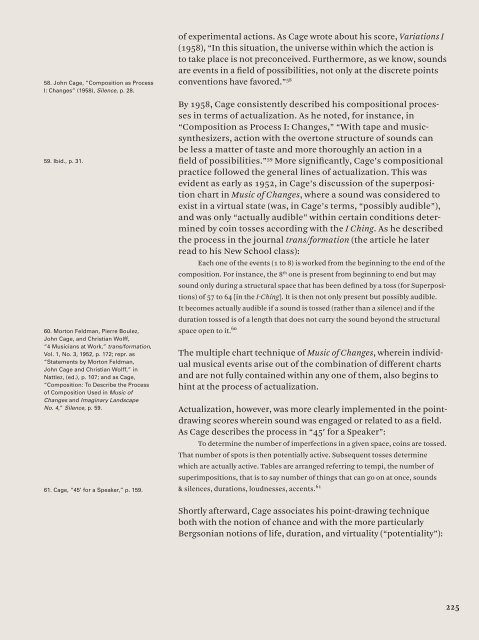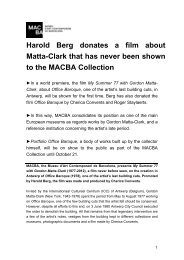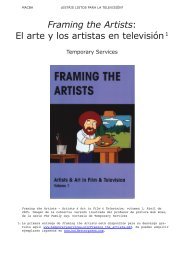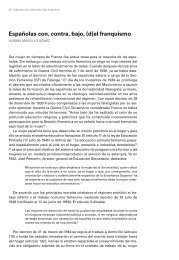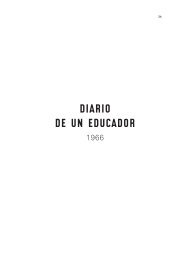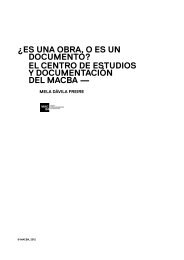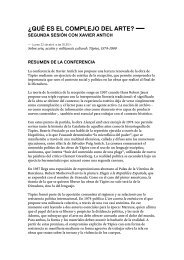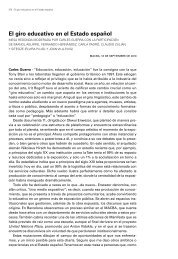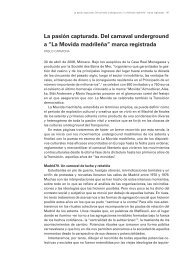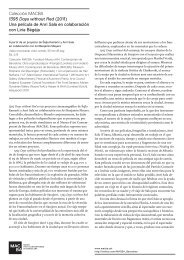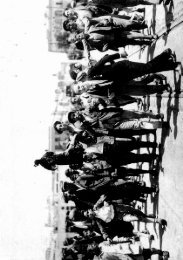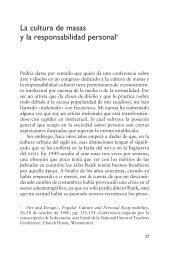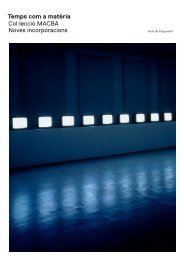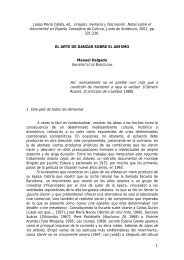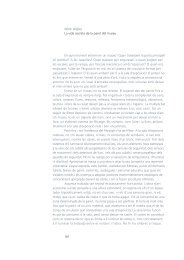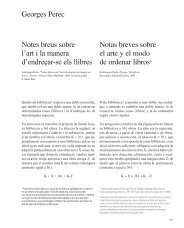Chance, Indeterminacy, Multiplicity - Macba
Chance, Indeterminacy, Multiplicity - Macba
Chance, Indeterminacy, Multiplicity - Macba
You also want an ePaper? Increase the reach of your titles
YUMPU automatically turns print PDFs into web optimized ePapers that Google loves.
58. John Cage, “Composition as Process<br />
I: Changes” (1958), Silence, p. 28.<br />
59. Ibid., p. 31.<br />
60. Morton Feldman, Pierre Boulez,<br />
John Cage, and Christian Wolff,<br />
“4 Musicians at Work,” trans/formation,<br />
Vol. 1, No. 3, 1952, p. 172; repr. as<br />
“Statements by Morton Feldman,<br />
John Cage and Christian Wolff,” in<br />
Nattiez, (ed.), p. 107; and as Cage,<br />
“Composition: To Describe the Process<br />
of Composition Used in Music of<br />
Changes and Imaginary Landscape<br />
No. 4,” Silence, p. 59.<br />
61. Cage, “45’ for a Speaker,” p. 159.<br />
of experimental actions. As Cage wrote about his score, Variations I<br />
(1958), “In this situation, the universe within which the action is<br />
to take place is not preconceived. Furthermore, as we know, sounds<br />
are events in a field of possibilities, not only at the discrete points<br />
conventions have favored.” 58<br />
By 1958, Cage consistently described his compositional processes<br />
in terms of actualization. As he noted, for instance, in<br />
“Composition as Process I: Changes,” “With tape and musicsynthesizers,<br />
action with the overtone structure of sounds can<br />
be less a matter of taste and more thoroughly an action in a<br />
field of possibilities.” 59 More significantly, Cage’s compositional<br />
practice followed the general lines of actualization. This was<br />
evident as early as 1952, in Cage’s discussion of the superposition<br />
chart in Music of Changes, where a sound was considered to<br />
exist in a virtual state (was, in Cage’s terms, “possibly audible”),<br />
and was only “actually audible” within certain conditions determined<br />
by coin tosses according with the I Ching. As he described<br />
the process in the journal trans/formation (the article he later<br />
read to his New School class):<br />
Each one of the events (1 to 8) is worked from the beginning to the end of the<br />
composition. For instance, the 8th one is present from beginning to end but may<br />
sound only during a structural space that has been defined by a toss (for Superpositions)<br />
of 57 to 64 [in the I-Ching]. It is then not only present but possibly audible.<br />
It becomes actually audible if a sound is tossed (rather than a silence) and if the<br />
duration tossed is of a length that does not carry the sound beyond the structural<br />
space open to it. 60<br />
The multiple chart technique of Music of Changes, wherein individual<br />
musical events arise out of the combination of different charts<br />
and are not fully contained within any one of them, also begins to<br />
hint at the process of actualization.<br />
Actualization, however, was more clearly implemented in the pointdrawing<br />
scores wherein sound was engaged or related to as a field.<br />
As Cage describes the process in “45’ for a Speaker”:<br />
To determine the number of imperfections in a given space, coins are tossed.<br />
That number of spots is then potentially active. Subsequent tosses determine<br />
which are actually active. Tables are arranged referring to tempi, the number of<br />
superimpositions, that is to say number of things that can go on at once, sounds<br />
& silences, durations, loudnesses, accents. 61<br />
Shortly afterward, Cage associates his point-drawing technique<br />
both with the notion of chance and with the more particularly<br />
Bergsonian notions of life, duration, and virtuality (“potentiality”):<br />
225


